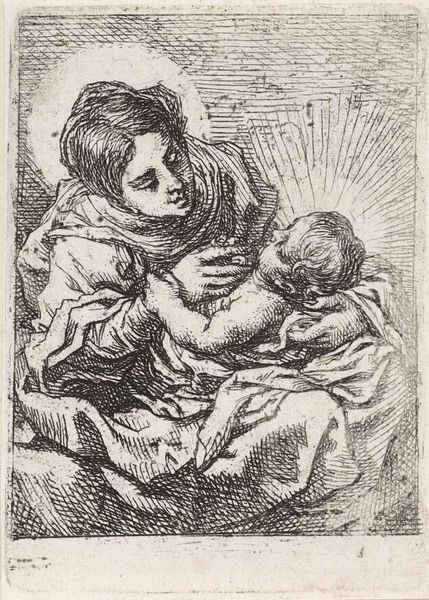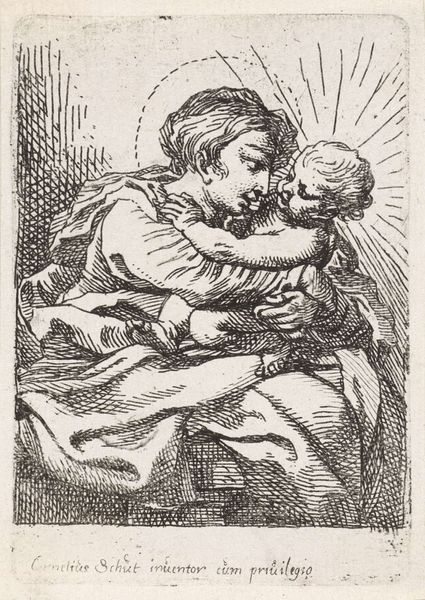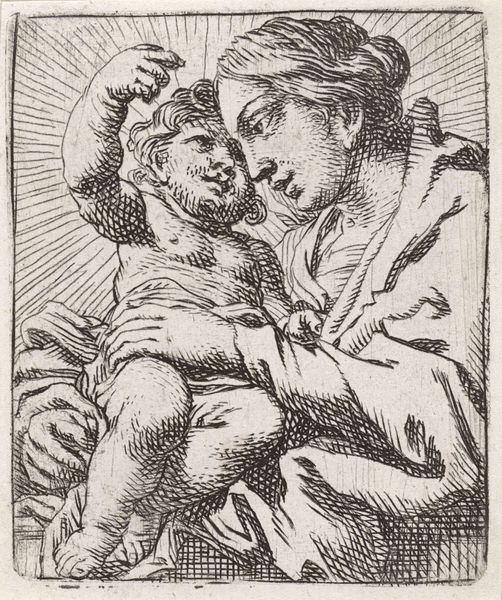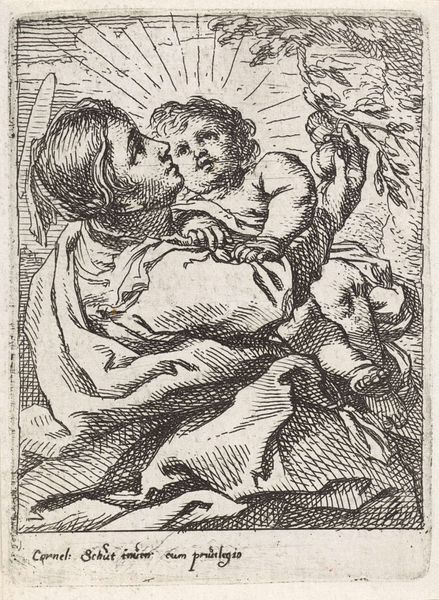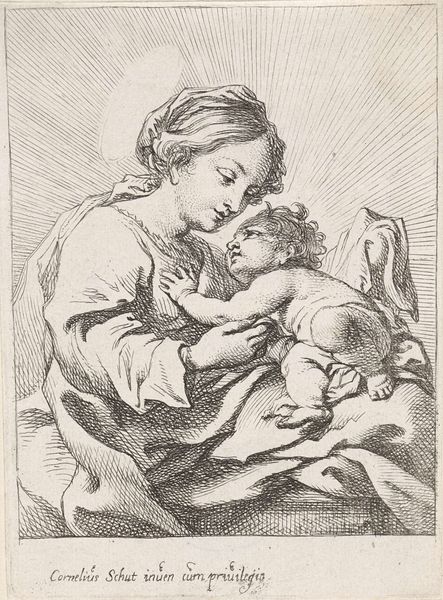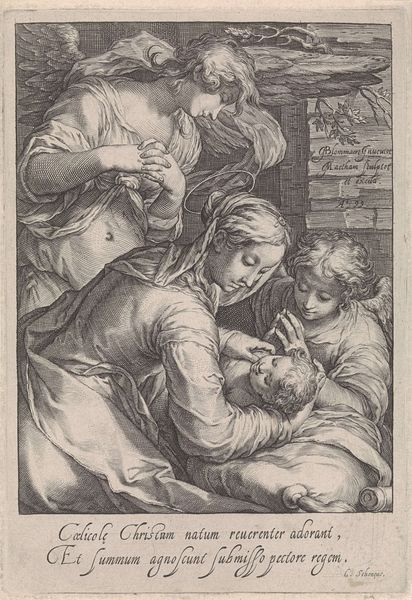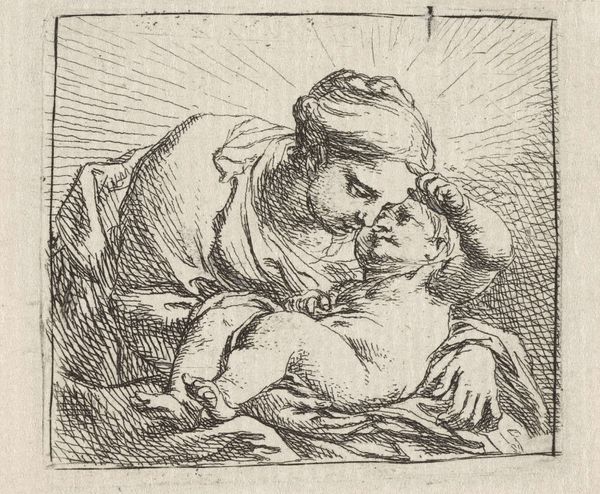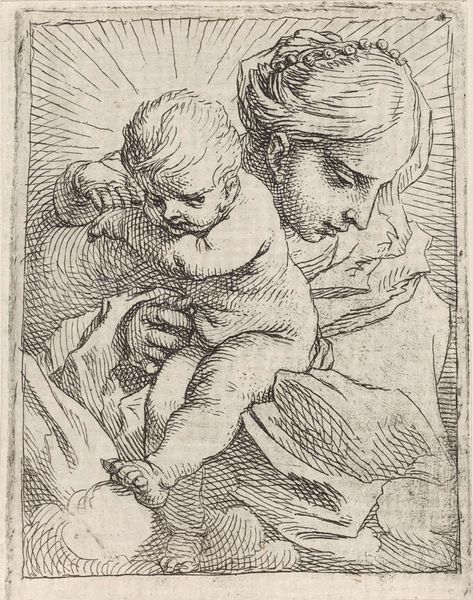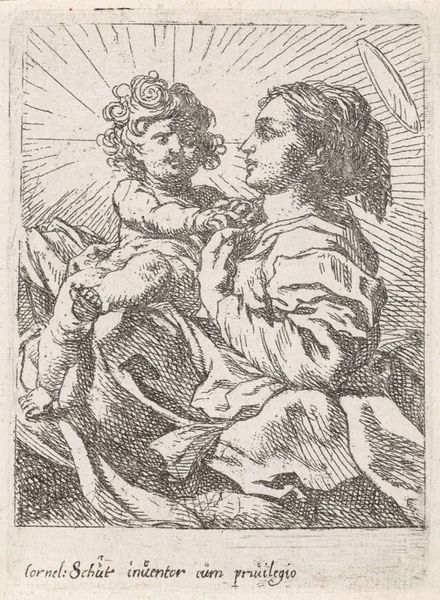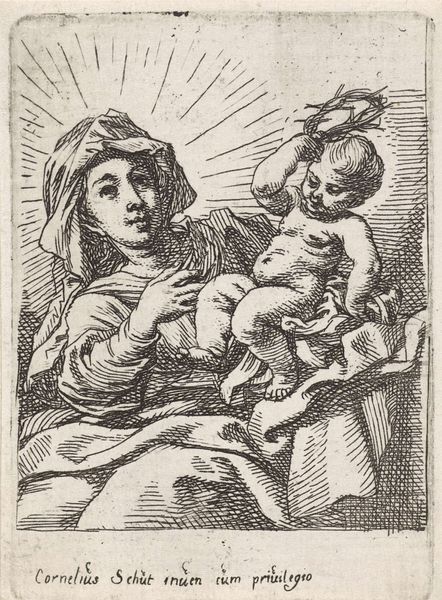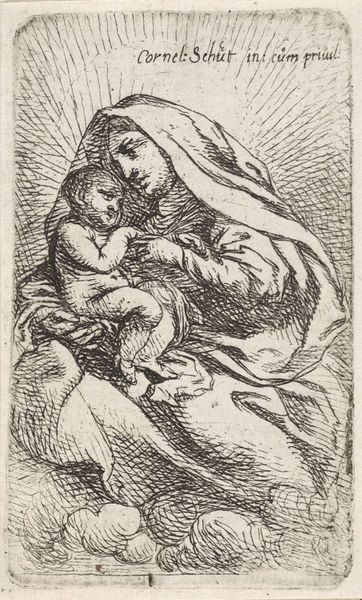
drawing, ink, engraving
#
portrait
#
drawing
#
quirky sketch
#
baroque
#
pen drawing
#
pen illustration
#
pen sketch
#
personal sketchbook
#
ink
#
sketchwork
#
pen-ink sketch
#
line
#
pen work
#
sketchbook drawing
#
sketchbook art
#
engraving
Dimensions: height 97 mm, width 69 mm
Copyright: Rijks Museum: Open Domain
Curator: Here we have Cornelis Schut’s “Madonna met Kind,” created sometime between 1618 and 1655. It's an engraving currently held at the Rijksmuseum. Editor: My first impression? Striking simplicity. The linear quality is so direct, almost stark, and yet, tender. The contrast pulls me right in. Curator: It is a beautiful demonstration of Baroque portraiture, showing Mary gazing down at the Christ child, her expression one of serenity and love. It echoes so much of the iconography circulating at that time. What I find compelling is understanding how these images become almost a form of cultural currency. Editor: Yes, currency, but created how? The tangible process fascinates me. The hatching and cross-hatching–the labor evident in building tone and form with such precise, repetitive marks. And on what scale was this likely produced and distributed? Who was consuming these images, and under what social conditions? It definitely speaks to accessible art, of sorts. Curator: It does. Consider the socio-political climate in the Netherlands at this time – religious and political upheaval, and prints like these helped to spread and cement specific visual messages amongst a broad public. This wasn’t just about aesthetics; it was about consolidating power through visual narratives. Editor: Exactly. And looking closer at the materials—the paper itself, the ink— these materials speak of a specific time and place, part of trade networks and material culture that underpinned the creation and dissemination of art. I am especially drawn to consider how it fits alongside the craft traditions of the period. It highlights the relationship between "high art" and what was often considered “lesser” forms of artistic labor. Curator: It certainly provides plenty of scope to discuss how cultural values are expressed, even embedded, within seemingly simple artworks like this. Editor: For me, it is all about connecting the image to the material conditions of its production and reception. From the engraver's hand to the viewer's eye, there is a world of social and material relations to explore.
Comments
No comments
Be the first to comment and join the conversation on the ultimate creative platform.
